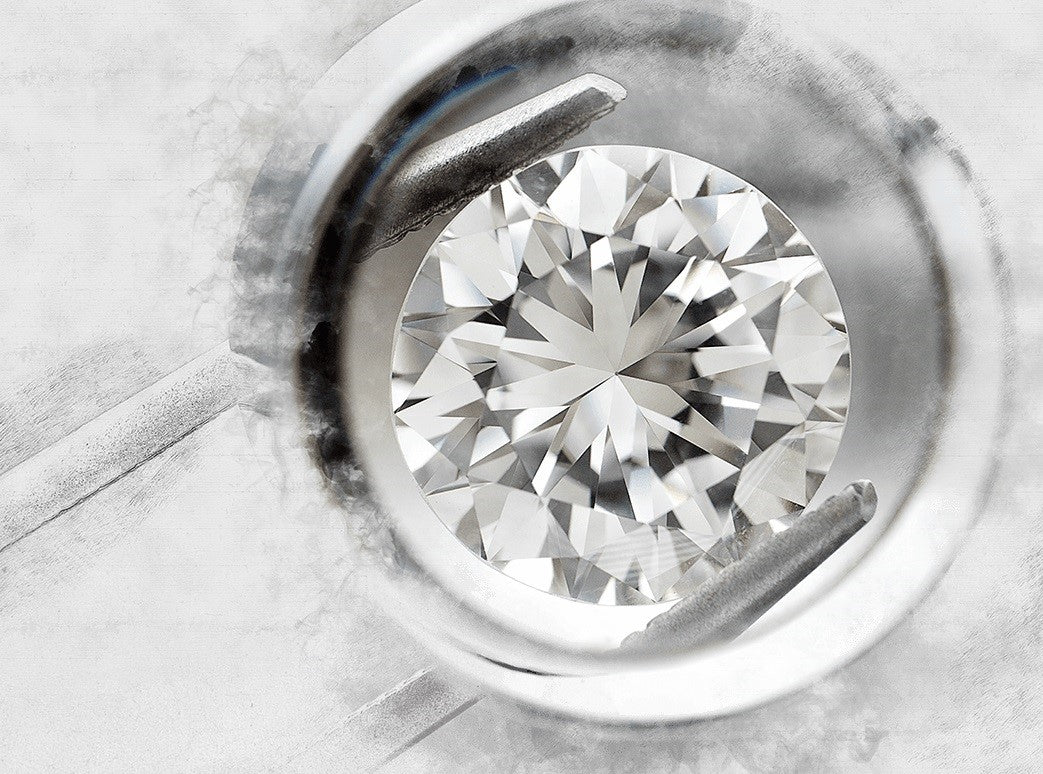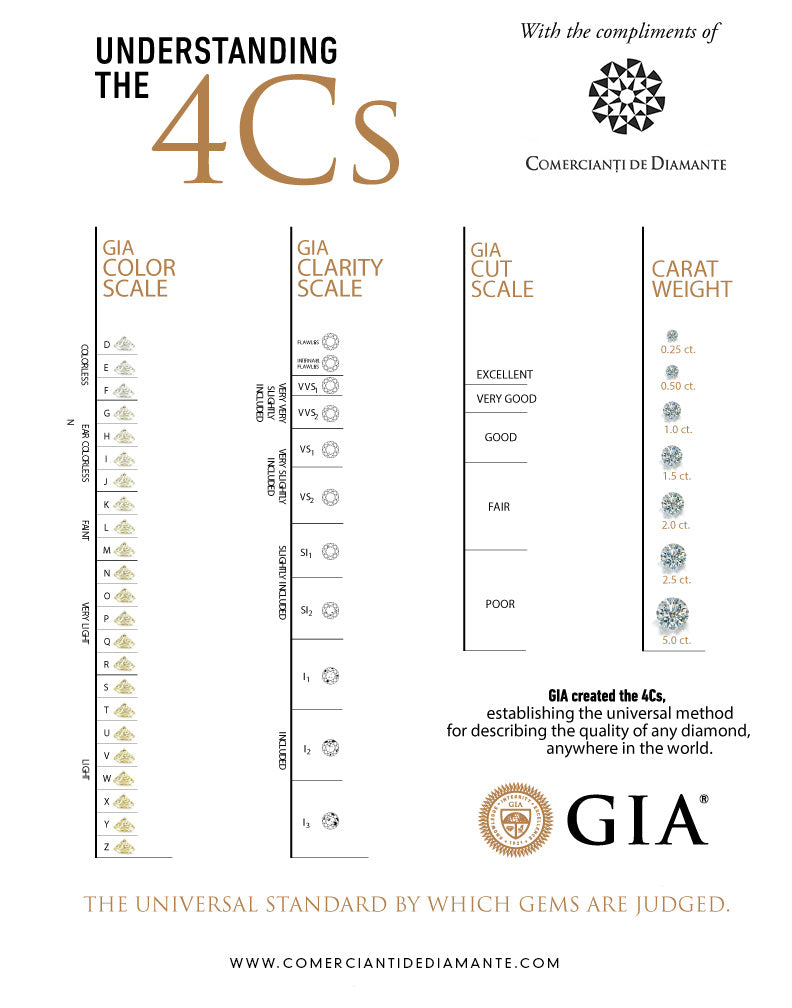Article: The Diamond Guide

The Diamond Guide
The complete guide to the perfect engagement ring
Contrary to expectations and words, not all diamonds are identical! Of course, we all know that there are different sizes and shapes, but what makes one diamond more valuable than another? We hope that in the following lines we will clarify the situation, using the table below, the rule of 4 C's and GIA Diamond Grading. The rule of the 4 Cs was created in the middle of the 20th century by the GIA, (Gemological Institute of America) as the universal rule for diamond quality. Each diamond is unique, just like the person who wears it. Each of the 4 C's focuses on a feature of the diamond, and together they determine its value.
 color
color
The first c it's the color. When the table indicates a color, it actually refers to a lack of color. The more colorless a diamond is, the more valuable the diamond is. Diamonds are graded from D to Z. D being completely transparent, and slowly transitioning to the letter Z, the color is more and more present. To the untrained eye, the differences may be minor or hard to see, but these differences can make a big difference in price.
Clarity
The next C is about clarity. Clarity refers to the absence of impurities embedded in the diamond. (including internal and external ones). Natural diamonds are formed when carbon molecules are subjected to extremely high pressure and temperatures, pressures that can sometimes create imperfections. Grading of imperfections is as follows and can influence the price of a diamond considerably.
- Flawless (FL) - This abbreviation indicates that there is no visible imperfection under the microscope. (image enlarged at least 10 times).
- VVS1 and VVS2 (With very very few imperfections)
- VS1 and VS2 (With very few imperfections)
- SI1 and SI2 (With few imperfections)
- I1, I2 and I3 (With imperfections)
Section
The third C refers to the cut (from the English "cut"). Again, at first glance the cut immediately leads you to the model, but actually the cut refers to how well the faces of the diamond interact and catch the light. Grading the cut is the most difficult and is critical in determining the price. The diameter, the tablet, the crown, the belt, the pavilion, the package and the depth (we will explain them in turn, in a future article) play an extremely important role. These factors influence:
- Brilliance - the amount of light reflected by the diamond
- Diffraction - the ability of the diamond to scatter light in all the colors of the rainbow
- Sparkling - the amount of sparkles the diamond produces and their texture
Grading the cut doesn't seem so simple anymore, does it? The best qualification received can be Excellent, going down to Very Good, Good, Fair and Poor.
Caratage
Last but not least, Caratage (Weight). Here things are simpler, the carat consists of the diamond's weight. Considering that all stones are cut to different sizes and shapes, weight is the only value to determine size.
Our advice when buying a diamond is to take care of this factor. Between a diamond of 0.95 ct and 1.00 ct there can be a big difference in price, although the differences can be imperceptible to the naked eye.
Diamond Merchants and the last C: Cost
The 4 C's will determine the price of a diamond. At Diamond Merchants, we consider that there is a fifth C, namely the cost. At Comercianti de Diamante, our diamonds are certified by several companies alongside the most famous diamond grading institution, namely GIA. Besides this, we can offer you exactly the stone you want. That's why most clients turn to our bespoke services and create their own jewelry. I hope to meet in our showroom to be able to prove all these things to you.


